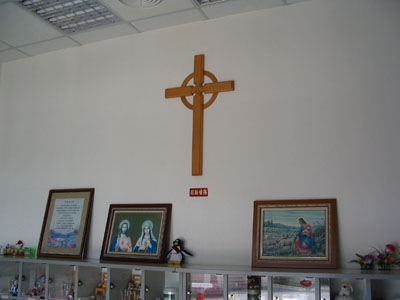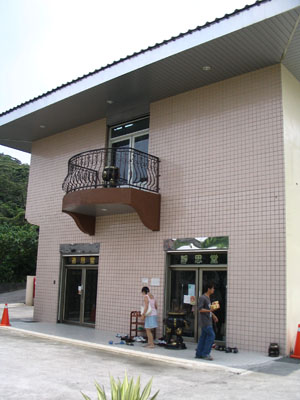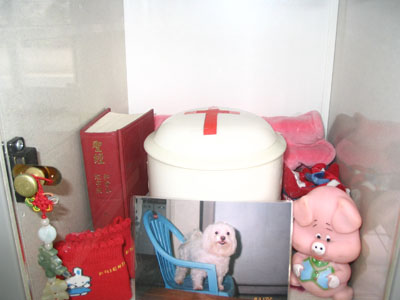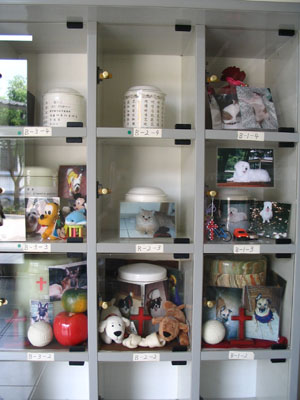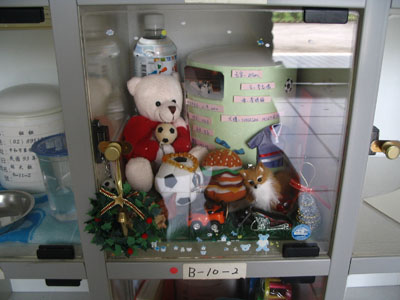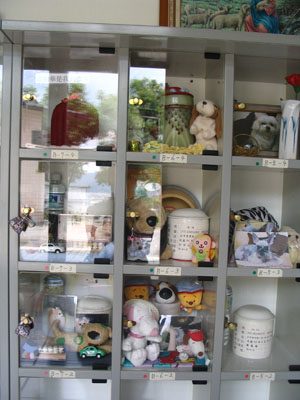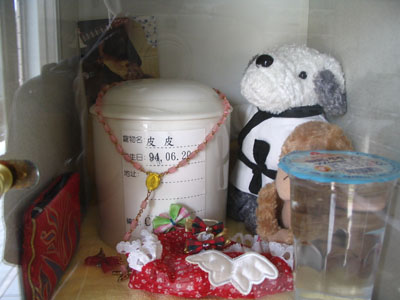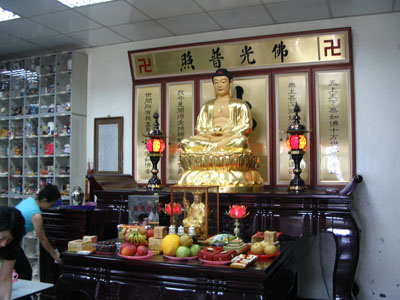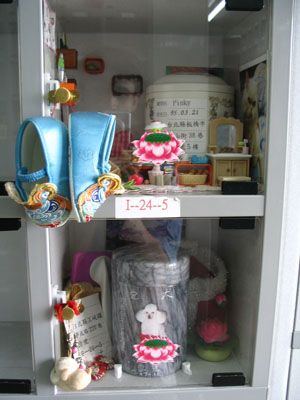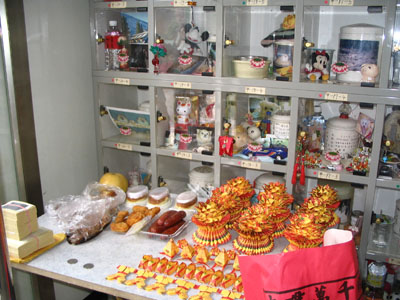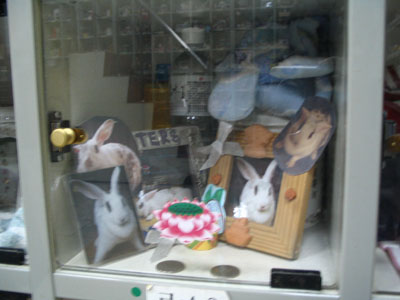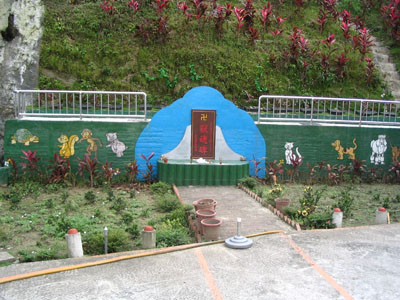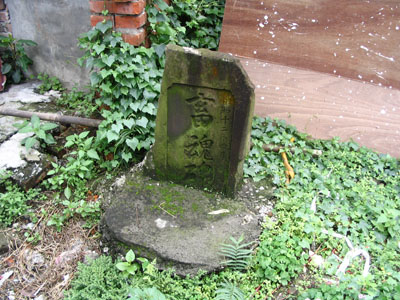
The following album details the religious affiliations of animal companions (aka “pets”), largely based on my visit to a pet columbarium in northern Taiwan in spring 2006. The ideas surrounding this pet columbarium are largely Japanese imports. All photographs, unless otherwise noted, were taken in spring 2006 by Douglas Gildow. More on Taiwanese typologies of manes can be found in Gildow 2005. Fig. 5.4.2. Christian pets lie under a crucifix and a placard that reads “Jesus loves you.” Fig. 5.4.1. Just as there are different roads to truth, there are different entranceways to the Christian and Buddhist areas of the columbarium (=a structure of vaults lined with recesses for cinerary urns; cinerary=containing or used for ashes especially of the cremated dead: definitions in this album are from Merriam-Webster’s Unabridged Dictionary). Fig. 5.4.3. Christian pets prefer crucifix imagery in their compartments. Regardless of their age at death, or their age in “animal years,” based on the ritual paraphernalia in their compartments, deceased pets seem to be universally treated as if they were children of about five years of age. Fig. 5.4.5. This male Siberian Husky, Allen, evidently had a fondness of soccer balls and motorcycles. It is uncertain whether his death was related to the fact that huskies tend to suffer from heat stroke in subtropical/tropical Taiwan. More research is necessary to determine whether the water in this compartment and the one next to it is holy water or not. Fig. 5.4.7. We are not provided with a funerary portrait of the pet Pipi 皮皮, but judging from the ritual objects present in its compartment we can surmise that it was probably (1) a dog, and (2) female. However, given that some deceased dogs have Hello Kitty (ハローキティ ) dolls installed in their compartments, it is also possible that this compartment contains the remains of a cat with a fondness for Snoopy-like dog dolls. (There are actually not very many Christian pets in the columbarium, and I’ve covered them rather extensively. I apologize for having over-represented the importance of Christianity among Taiwanese pets, but many Anglophones are understandably concerned about the diffusion of their faith abroad.) Fig. 5.4.10. Pinky, a Buddhist, has a lotus decoration on its compartment, as does the Buddhist swfy dog, below. (By “Buddhist” I sometimes mean “pet with Buddhist owners,” pace Richard Dawkins. I do not believe that such use of adjectives constitutes animal abuse. Also, whereas followers of Lev Vygotsky [see his Language and Thought] and Clifford Geertz might claim that public representations, esp. language, are necessary preconditions for the development of mental representations, I disagree. Since linguists almost universally agree that only humans possess language, and thinking is hardly possible without mental representations, such claims imply that animals cannot think, much less be Buddhists [assuming that being a Buddhist is predicated on the ability to think]. But from my experiences in raising a cat I believe that Vygotsky and Geertz are wrong, and the Buddhist tradition supports me: Holmes Welch notes cases of turtles and cows showing Buddhist understanding, and of cows receiving the Three Refuges [see The Practice of Chinese Buddhism 1900-1950, p. 317].) For more on animal emotions and thoughts, see books by Temple Grandin and the coverage in National Geographic (March 2008, “Animal Minds”). Fig. 5.4.12. Ritual paraphernalia and offerings on a sacrificial table, including two ten NT-dollar coins (in place of divination blocks); silver paper money (indicating the status of the deceased is closer to ghosts than to deities); paper models of human-shaped clothing (resembling offerings given to ghosts on paper money, and suggesting anthropomorphizing of the postmortem pets); cooked foods (suggesting the deceased are more like humans than they are like transcendent deities); and paper lotus-seats (suggestive of rebirth in the Western Land of Ultimate Bliss). Fig. 5.4.9. Notice the young woman lighting incense to the right. But below, outside on the first floor, I noticed a sign prohibiting the use of incense. Photographs like this one expose the folly of scholars who use normative, prescriptive texts as substitutes for empirical, ethnographic observation. Fig. 5.4.13. A passage indicating that offerings left overnight will be taken by the columbarium staff. More observation is needed to verify whether this normative claim corresponds to actual behavior. |
||||||||||||||||||||||||||||||||||||||||||||||||||||||||||||||||||||||||||||||||||||||||||






